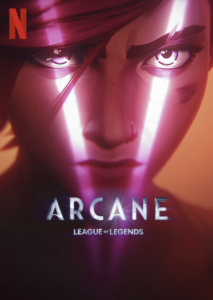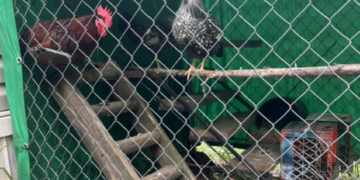
After three long and tantalizing years, Netflix has released the second and final season “Arcane” — a critically acclaimed and award-winning animated show.
Arcane is an animated series distributed by Netflix and produced by both the video game developer and publisher Riot Games and the French animation studio Fortiche. The adaptation is based on Riot Games’ popular multiplayer online battle arena game League of Legends (LoL).
League, as it is called colloquially, is set in the world of Runterra, which is divided into 28 nations and regions and allows players to battle as “champions,” playable characters with unique abilities and playing styles. The lore of the game is extensive, allowing Riot to produce other forms of media based around it including music, music videos, short cinematic trailers and now television shows.
Similarly to how the first season was released back in 2021, a total of nine episodes were released in three sections referred to as “acts.” The first act was released on Nov. 9, the second on Nov. 16 and the final on Nov. 23.
The series mostly focuses on Jinx, voiced by Ella Purnell and Vi, voiced by Hailee Steinfeld, who are two sisters from the undercity and victims of an ongoing class war between the lower class, of which the sisters are a part of, and the aristocrats of Piltover.
The plot displays themes of classism, systemic oppression, mental illness, trauma, kinship and explores if good or evil are innate, among so much more.
Arcane has garnered a massive and dedicated fan base consisting of LoL players and non-players alike. Earning a Rotten Tomatoes score of 100% and 17 awards, including four Primetime Emmy’s and nine Annie awards, it is considered to be one of the best and most successful video game adaptations. Despite its overwhelming success, the final season slightly misses the mark.
In season two, the narrative picks up immediately after the cliffhanger-ending of season one.
Jinx’s act of terrorism against the council members of Piltover gets the ball rolling and leaves many characters devastated, causing them to perform acts of desperation in order to cope. The momentum of these actions seem to set the pace for the rest of the episodes: speedy and unrelenting.
Through the acts, the audience is introduced to new characters as well as old characters’ evolutions. Each individual has a convoluted arc that does not give the plot any room to breathe.
In season one, there were moments of pause to allow the viewer to process what they had just watched. In the most recent season, there are emotionally heavy moments that seem to be somewhat glossed over and not given the proper time to settle.
Christian Linke, Arcane’s co-creator and showrunner, revealed that much of the final season was cut because some of the episodes, specifically the finale, were too long and grueling for the animators at Fortiche to reasonably bring to life. A lot of that deleted content would have provided much needed context and would have left fans with so many unanswered questions.
If the episode lengths were a major concern, saving some plot points for another season or even an additional three-episode-act, would have made this conclusion less claustrophobic and rushed.
Regardless of its shortcomings, this season does very little to tarnish the greatness that is “Arcane,” as it contains an excellent soundtrack, high-quality writing, incredible acting performances and innovative animation.
After taking nearly a decade to complete, Fortiche was able to create their own unique art and animation style “Touche Fortiche” — a graphic style that blends principles of both 2D and 3D media, warranting praise from fans and industry professionals and other animators.
Arcane is a revolutionary piece of media that has pushed boundaries on the capabilities of animation while also becoming a masterclass in storytelling and providing exceptional representation for audiences. However, it does not achieve the same level of greatness as its prior season.



























